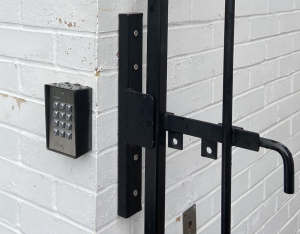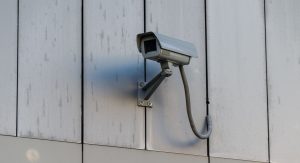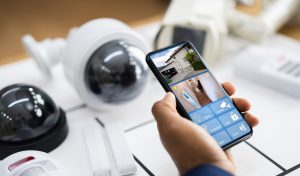CCTV, a common sight in shops, streets, and even homes, stands for Closed-Circuit Television. Unlike broadcast television, CCTV transmits a video signal to a limited set of monitors, creating a “closed circuit.” This technology has become a crucial part of modern security systems, but its journey from a niche invention to a widespread tool is a fascinating one.
A Brief History of CCTV: From Early Experimentation to Modern Systems
The seeds of CCTV were sown in the 1920s. German engineer Walter Bruch experimented with transmitting video signals over cables, laying the groundwork for the technology. However, the first practical CCTV system is credited to Siemens AG, another German company, in 1936. These early systems were bulky and expensive, primarily used for military applications like monitoring rocket launches.
World War II further spurred the development of CCTV. Security concerns at military bases and factories fueled the need for remote monitoring. It wasn’t until the 1950s and 1960s that CCTV technology began to shrink in size and become more affordable. Banks and casinos were some of the first adopters of CCTV for security purposes.
The 1970s saw a significant shift with the invention of the Charge-Coupled Device (CCD) sensor. This innovation paved the way for smaller, lighter cameras, making CCTV systems more versatile. The 1980s witnessed a boom in CCTV use, particularly in the UK following a series of high-profile crimes.
The emergence of digital technology in the late 20th and early 21st centuries revolutionised CCTV. Analogue CCTV systems, which relied on coaxial cables to transmit video signals, were gradually replaced by digital systems. Digital CCTV offers several advantages, including higher resolution images, easier storage and retrieval of footage, and the ability to transmit video over long distances using networks.
Today, CCTV systems come in various configurations, from simple single-camera setups to complex networks with hundreds of cameras. They can be integrated with other security systems like alarms and access control. Advancements like night vision, high-definition recording, and remote access through smartphones have further enhanced the capabilities of CCTV.
How Does CCTV Work? A Breakdown of the System
A basic CCTV system consists of several key components:
- Cameras: These capture visual information and convert it into an electronic signal. Modern CCTV cameras come in various forms, including bullet cameras, dome cameras, and PTZ (Pan-Tilt-Zoom) cameras.
- Video Recorder: This device receives the video signal from the camera and records it for later playback. Digital Video Recorders (DVRs) are the most common type, storing footage on hard disk drives. Network Video Recorders (NVRs) are another option, storing footage on a network storage device.
- Monitor(s): These display the live feed from the cameras or recorded footage. In modern systems, monitors can be replaced by accessing the video feed remotely through computers or smartphones.
- Cabling or Wireless Network: This connects the cameras to the recorder and monitors. Traditional CCTV systems use coaxial cables, while modern ones often rely on wireless networks.
Here’s a simplified breakdown of the process:
- The camera captures a scene and converts the image into an electrical signal.
- The signal is transmitted to the video recorder through cables or a wireless network.
- The recorder stores the video signal as digital data (in digital systems) or as an analogue signal (in older systems).
- The video feed can be viewed live on a monitor or accessed later through playback on the recorder or remotely through a computer or smartphone.
The Benefits and Drawbacks of CCTV
CCTV offers a wide range of benefits:
- Crime Deterrence: The visible presence of CCTV cameras can deter potential criminals from committing offences.
- Evidence Collection: Recorded footage can provide valuable evidence in criminal investigations, helping to identify and apprehend perpetrators.
- Improved Security: CCTV allows for remote monitoring of a location, enabling a quicker response to security incidents.
- Monitoring Activity: CCTV can be used to monitor employee activity in workplaces or customer behaviour in shops.
- Traffic Management: CCTV cameras are used to monitor traffic flow and identify congestion points.
However, the widespread use of CCTV also raises concerns:
- Privacy Issues: The presence of CCTV cameras can create a sense of being constantly watched, raising privacy concerns.
- Data Security: Improperly secured CCTV footage can be vulnerable to hacking and misuse.
- Misuse of Technology: CCTV systems can be used for discriminatory purposes or to monitor people’s movements without their knowledge.
It’s crucial to strike a balance between security needs and individual privacy when deploying CCTV systems. Regulations and guidelines are often in place to ensure the responsible use of CCTV technology exists.
If you need further advice about CCTV, contact our office staff for a friendly chat.








